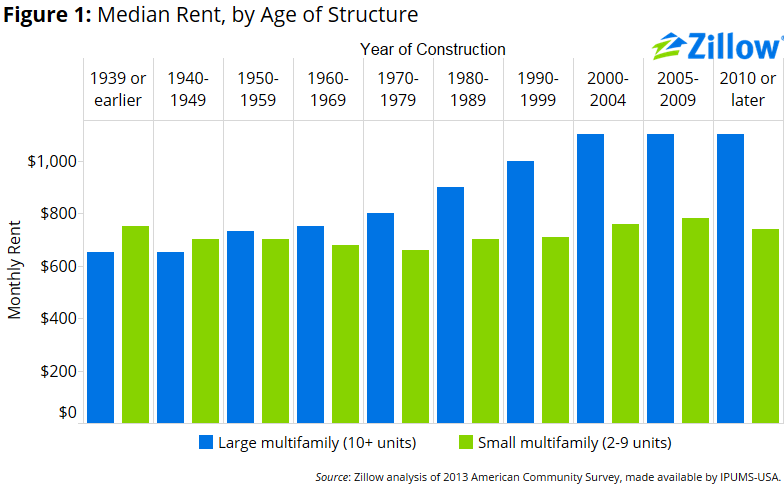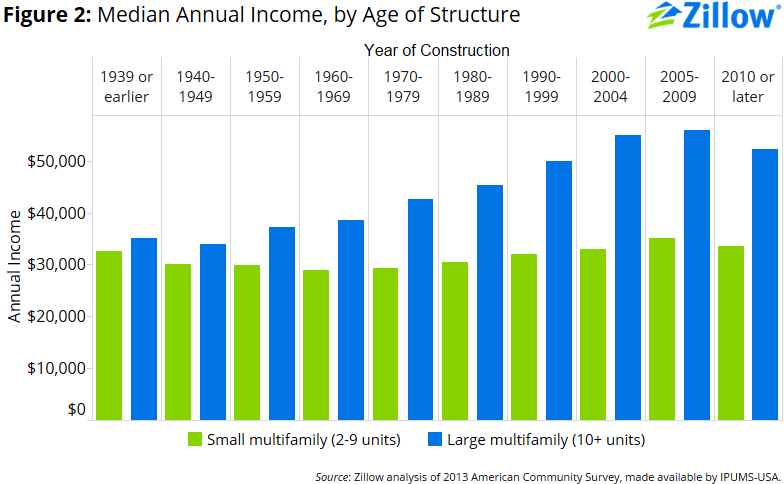New things tend to be more expensive than old things—new cars, new computers, new spouses and new homes (of course, after a certain age, things become antiques and their value starts to rise again).
This wisdom also holds true for apartments, according to a Zillow analysis of data from Census Bureau’s 2013 American Community Survey.[1]
Newer rental buildings tend to have higher rents…
Rents tend to be higher in large multifamily buildings (those with ten units or more) than in small multifamily buildings (those with two to nine units). Also, landlords in newer buildings tend to charge more in rent than landlords in older buildings—a trend especially pronounced in larger buildings. The newest large buildings tend to charge almost 70 percent more in rent than the oldest large buildings, but the newest small buildings charge roughly the same rent as the oldest small buildings (figure 1).
Only for the oldest buildings—those constructed prior to 1950—are rents higher for small multifamily buildings than for larger multifamily buildings. For small multifamily rental properties constructed prior to 1940, the median monthly rent in 2013 was $750, compared to $650 for large multifamily properties constructed prior to 1940. By contrast, for the newest multifamily rentals, those built in 2010 or later, the median rent for small buildings was $740, compared to $1,100 for large buildings.
…and people who live in newer buildings tend to have higher incomes…
The residents of large multifamily rental buildings also tend to have higher incomes than the residents of small multifamily properties. And the residents of recently-built multifamily rentals also tend to have higher incomes than the residents of older multifamily rentals.
The median household income of residents of the most recently built large buildings was $52,200 in 2013, almost 50 percent more than the median household income of tenants in the oldest large buildings ($35,000) (figure 2). Incomes among residents of smaller buildings were much flatter: The median household income of residents of the oldest buildings was $32,500, compared to a median income of $33,600 among residents of the newest buildings—a 3 percent difference.
…but even with higher rents, large-building tenants spend less of their income on rent.
Finally, residents of larger buildings also have an easier time affording their higher rents. The typical resident of a large multifamily rental building spends about 23 percent of their monthly income on rent. The typical resident of a small multifamily rental building spends about 26 percent of their monthly income on rent. Affordability doesn’t appear to vary much by the age of the building.
[1] Data made available by Steven Ruggles, J. Trent Alexander, Katie Genadek, Ronald Goeken, Matthew B. Schroeder and Matthew Sobek, Integrated Public Use Microdata Series: Version 5.0 [Machine-readable database] Minneapolis: University of Minnesota, 2010.


